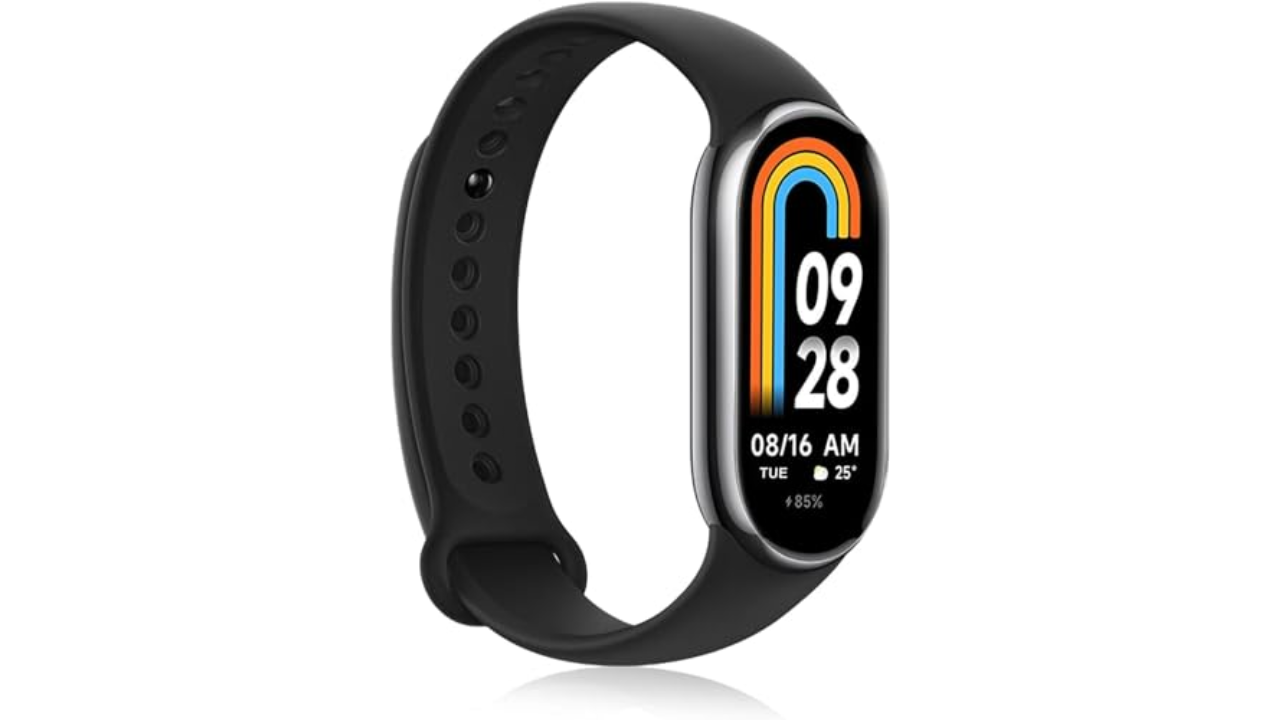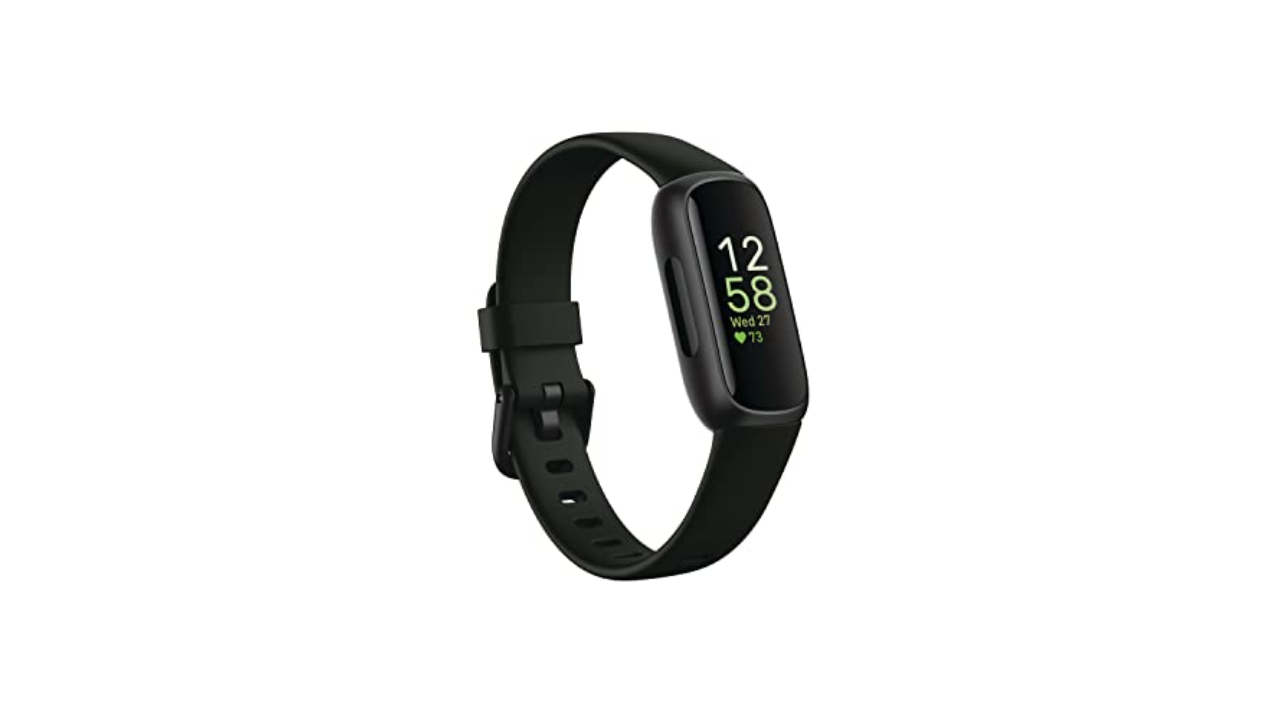Just set new fitness goals for yourself but unsure how to achieve them? Modern wearables have simplified tracking daily steps, heart rates, sleep stages, and more, so you can focus on other healthy habits without spending time monitoring data yourself. Fortunately, you don’t need to spend hundreds to get a wearable suitable for this purpose.
Budget fitness trackers have significantly improved in recent years. Featuring connected GPS tracking for outdoor runs, real-time heart rate tracking to maintain zone accuracy during workouts, and compatibility with both iPhone and Android devices, you can find a suitable match for both your needs and budget. From simple step counters to advanced running watches, affordable fitness trackers offer substantial support in your journey towards improved health without draining your wallet. Here are our top picks.
Best cheap fitness trackers for 2025
Tracking type: Heart rate, sleep, stress, blood oxygen, women’s health | Supported Operating System: Android 6.0 and above, iOS 12.0 and above | Memory: 100GB | Screen size: 1.62” | Waterproof: 5ATM water resistant | GPS: No | Battery life: 16 days
The Xiaomi Smart Band 8 shines for its user-friendly interface for recording workouts and its comfortable band for sleeping. With features expected from a fitness tracker and an attractive price point, the 1.62-inch, 192 x 490 AMOLED display shines bright, both indoors and out. While lacking a physical navigation button, navigating through the UI is as simple as swiping up and down, or left and right.
The standout feature of the Smart Band 8 is its detailed workout reports. Unlike other trackers, you don’t have to download exercises from its companion app. You can start tracking exercises, even niche ones like skiing, right away. Post-workout, all data from heart rate readings, pace, speed, and calories burned, appear directly on your wrist. Even details like time spent in each heart rate zone, from light to anaerobic, are available.
Xiaomi’s tracker also features “Pebble” mode, allowing you to clip it onto shoelaces to get running and cycling data. In this mode, detailed stats like flight ratio and ground contact time are available, enhancing tracking for sprints and providing running form insights.
Thanks to its lightweight design, the tracker is comfortable to wear during sleep. The do-not-disturb feature is easily activated, and the bright screen doesn’t interrupt sleep. Highly detailed sleep insights are available right on your wrist. Overnight data on sleep duration, sleep stages, average heart rate, and breathing patterns are impressive, all accessible without additional costs.
Importantly, Xiaomi’s battery life claims are accurate. A quick 30-minute charge offers two weeks of use, ensuring uninterrupted activity and sleep tracking.
Pros
- Easy to navigate interface
- Full color display
- Comfortable design that supports Pebble mode
- Good fitness tracking and sleep monitoring
- Long battery life
Cons
- No physical navigation button
Tracking type: Heart rate, sleep, stress, blood oxygen, women’s health | Supported Operating System: Android 7.0 and above, iOS 12.0 and above | Memory: 2.3GB | Screen size: 1.47” | Waterproof: 5ATM water resistant | GPS: No | Battery life: 18 days
The Amazfit Band 7 offers pre-loaded workouts on your wrist and a unique interface allowing custom goal settings, like a 500-calorie burn before starting a workout. The battery life is attractive with a respectable 18 days of usage or more with battery-saver mode. A unique feature, the PAI (Personal Activity Intelligence), calculates a score from heart rate during activities, aiming towards maintaining strong heart health with a score close to 100. Like Xiaomi Smart Band 8, the Amazfit Band 7 provides a breakdown of heart rate activity zones on the watch face.
The watch combines heart rate, blood oxygen levels, and stress scores based on heart rate variability through its innovative “one tap measure.”
Drawbacks include slower performance compared to the Xiaomi Smart Band 8 in starting and ending exercise sessions and lack of a physical navigation button makes exiting a page challenging sometimes. While it features an AMOLED color display, the Band 7 is not always easy to view, even indoors. Despite being more comfortable for sleeping than other tested models, the details in its sleep report and condition assessments for issues like sleep apnea require premium service through the Zepp app, costing $10 monthly or $50 annually, including additional contents like an AI sleep coach.
Pros
- Supports custom goal setting per workout
- Good activity and sleep tracking
- Comfortable design
Cons
- Slow performance
- No physical navigation button
Tracking type: Heart rate, sleep, stress, blood oxygen, women’s health | Supported Operating System: Android 10.0 and above, iOS 15.0 and above | Memory: 6.4GB | Screen size: 0.7” | Waterproof: 5ATM water resistant | GPS: No | Battery life: 10 days
Expectations for the Fitbit Inspire 3 were slightly higher given its brand and cost. However, it was a tad underwhelming. The tracker covers its basic role of recording workouts but with a limit of six activity types at a time. For additional activities, such as weight-lifting routines, changes need to be made via the Fitbit app. In comparison, the Fitbit Charge 6 features a built-in GPS, a feature Inspire 3 lacks, requiring a phone for accurate pace or distance tracking.
The Active Zone Minute breakdown post-workout is a distinctive Fitbit feature calculating workout intensity along with fat-burning efficacy. While the app proficiently breaks down additional health metrics during workouts, accessing deeper insights requires phone use, which can be an inconvenience.
Another shortcoming is manual menstrual cycle data entry, unlike the Xiaomi Band 8 and Amazfit Band 7 models, due to lack of direct inclusiveness from the band. Despite Fitbit Inspire 3’s battery life living up to company’s 10-day usage claim, and taking under 45 minutes to charge, along with decent sleep-tracking comfort, the invisible Fitbit Premium paywall guarding sleep coaching attractiveness diminishes some appeal.
Pros
- Supports Active Zone Minutes tracking
- Good battery life
- Comfortable design
Cons
- Cannot manually add menstrual cycle data directly from the band
- Lots of data hidden behind Fitbit Premium paywall
What to look for in a cheap fitness tracker
All the best fitness trackers should have at least three features: a program to track workouts or some physical activity, a feature for monitoring and collecting sleep stages data, and the ability to track heart rate and blood oxygen levels (though these readings may not be highly accurate). Features like blood pressure monitoring typically require a more expensive wearable like the Samsung Galaxy Watch, priced over $400.
Fitness features
Budget workout trackers are ideal for monitoring manageable goals, like a goal of 10,000 steps by sunset or a 30-minute HIIT session to raise heart rate. More seasoned athletes training for events like triathlons may require devices measuring cadence, ground contact time, and more. said features allow insights into performance data, sports modes, and workout customization.
A basic budget tracker should provide fitness tracking features beyond typical activities like walking and running—otherwise, it would merely function as a pedometer. Activity tracking varies among devices; some recognize activities like skateboarding, while others can track basic movements like jumping jacks.
Devices in this price range typically track a mix of cardio, strength training, and machine workouts, providing numerical or visual heart rate activity, calories burned, and overall pace during each session. Although budget trackers might provide heart rate data, their insights in helping you understand these results and adjust workouts are usually fewer. If you stumble upon a budget device offering smart coaching, expect it to be generally hidden behind a paywall.
Tracking recovery is vital to any fitness journey. Devices under a $100 price tag should indicate sleep duration and provide stage breakdowns like REM, deep, and light sleep. It is, however, not a guarantee you will receive a sleep “score” or improvement suggestions; these are more commonly offered by pricier wearables. As budget trackers aren’t typically designed for sleep, pay attention to comfort. The bands and watch faces on these may impede getting some good rest.
Connectivity and practicality
Many budget-friendly activity trackers are not built for seamless smartphone integration. Despite trackers tested in this roundup being unable to make calls or send text messages, they can display and dismiss incoming notifications and calls through Bluetooth. Little chance exists for checking emails or paying via wrist using these less expensive devices.
Most budget fitness trackers lack built-in GPS. Instead, they rely on paired smartphones for location data, limiting accuracy in measuring pace or distance and missing conveniences like turn-by-turn directions. Having GPS can be crucial for safety features, aiding outdoorsy consumers seeking such functionality.
Design
Inexpensive fitness trackers may often be cumbersome or less intuitive compared to advanced smartwatches. Whether due to limited screen size or unsophisticated interfaces, engaging with every feature may not be possible on the wrist; smartphone use will likely be necessary for logging detailed health data.
The quality of displays and bands will also differ significantly in this segment. High-resolution OLED displays or premium band materials may not be present, but some level of water and sweat resistance is expected.
Other cheap fitness trackers we tested
Wyze Watch 47c
The Wyze Watch 47c didn’t meet high expectations but, unfortunately was more limited than anticipated. It merely tracks walks and runs, failing auto-detection or auto-pausing in favor of a dedicated widget showing pace, heart rate, calories burned, and mileage. As it’s unable to track beyond walking or running, the device essentially functions as a pedometer. The square watch face is large and cumbersome, making it less favorable for sleep tracking, alongside its simplistic sleep reporting.
Garmin vivofit 4
The Garmin vivofit 4 has a miniature display devoid of touchscreen abilities, directing navigation through a singular button. The watch becomes problematic to read outside, and the exercise widget is difficult to navigate. Commencing a run takes holding the sole button, flipping pages to a moving person icon, and tapping of a bottom corner bar with precision to prevent mis-stepping into pages like a stopwatch, making it frustrating. Upon securing a run, the watch tracks steps and distance, devoid of auto-detection, auto-pause, mileage alerts, or calorie benchmarks.






